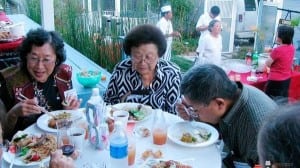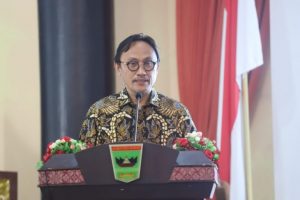Los Angeles’ Chinese American museum is set to host a food tasting event called “Chinese Islamic Cuisine: A Delectable Discussion” on Sunday. With the no-host sampling menu dinner at the China Islamic Restaurant in Rosemead, it’s an opportunity for those attending to sample a taste of the rich history of Islam in China and to understand the origins of Chinese halal cuisine in America.
The prix fixe menu on the day will include a wide variety of dishes. Event attendees can savor sesame bread with green onion, fish with black mushrooms and bamboo shoots, roast chicken, cold ox tendon and jellyfish, lamb stew hot pot, beef with dry bean curd and eggplant with spicy sauce. According to the organizers “the dinner will be a selected sampling menu, served family-style, at a set price of $20 ($18 for Chinese American Museum members).”
Wang Daiyu (whose real name is Muhammad Ahmad), who is editor of a Brass Crescent award winning blog “Islam in China” will be the featured speaker of the event, delivering a 20 minute account of the history of Chinese American Muslims.
Speaking to Al Arabiya News, Daiyu who is based in Maryland and whose name is a nom de plume to a 14th century Chinese Muslim scholar, explains the origins of the Chinese Muslim diaspora community in the United Sates.
“The earliest evidence of Chinese Muslims in the U.S. was during the construction of the transcontinental railroad in the mid-19th century. While Chinese Muslims have been part and parcel of Chinese immigrants to the U.S. since then their numbers traditionally have been small such that many of them assimilated with their non-Muslim Chinese brethren until recently.”
“Chinese American Muslims come not just from mainland but from other parts of Chinese diaspora e.g., Taiwan, Burma and Thailand. New York City is home to a close-knit community of a few hundred Chinese-Burmese Muslims. Perhaps the most famous Chinese American Muslim is General Ma Hongkui who was a Chinese warlord who settled in the U.S. with his family after the nationalists lost the civil war.”
The history of Muslims in China is as old as Islam itself. Muslims arrived in China when a number of Prophet Muhammad’s companions travelled eastwards to promote the message of Islam. Since the 7th century, Chinese Muslims have been a national ethnic minority, whose population is currently estimated at 20 million in the country, primarily in the northwest province. Chinese halal food evidences the cultural and culinary historical influence of the Silk Road, and brings it to 21st Century Los Angeles.
According to the blog “Islam in China”: “Out of the 56 officially recognized ethnic groups in China 10 are predominantly Muslim. These are Hui, Uyghur, Kazak, Dongxiang, Kyrgyz, Salar, Tajik, Uzbek , Bonan, and Tatar.”
Furthermore, the Hui and the Uygar ethnic groups form the numerical majority of the Muslim population in China: “Hui Muslims are the descendants of Arab, Persian and Turkish Muslims who intermarried with the local Han Chinese people. There are around 10 million Hui Muslims in China. Their culture is the same as that of the majority Han Chinese with the difference that the Hui practice Islam and thus don’t eat pork or drink alcohol.”
Ahmed’s website Islam in China provides an important spotlight on an often disenfranchised Muslim community. It’s a web resource that provides an overview on the intersection of Chinese, Islamic, and Muslim identity as well as exploring the culture, history, philosophy and traditions of Chinese Muslims.
The tasting event is part of the Los Angeles/Islam Arts Initiative (LA/IAI), led by the Department of Cultural Affairs. It is an unprecedented, first-of-its kind city wide initiative that presents Islamic arts through a program of art exhibitions, panel discussions, performances. It brings together nearly 30 cultural institutions throughout Los Angeles to tell various stories of traditional and contemporary art from multiple Islamic regions and their significant global diasporas.
December marks the last month of the two anchor shows of the Los Angeles / Islam Arts Initiative (LA/IAI) at Barnsdall Art Park (4800 Hollywood Blvd) before Doris Duke’s Shangri La heads back to its Honolulu home. As Los Angeles is the final leg of the tour, this is the last chance for families, locals, travelers and students to catch it as well as DCA-commissioned contemporary companion exhibition “Shangri La: Imagined Cities.”






